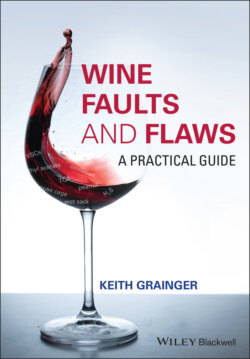Читать книгу Wine Faults and Flaws - Keith Grainger - Страница 38
1.14 Final Reflections
ОглавлениеMany wine lovers express unhappiness because, coinciding with the technological and scientific advances of recent years, wines have become more standardised and globalised. Regional characteristics that were once so distinctive have very often become blurred. As Clark Smith states in his book Post Modern Winemaking, ‘replacing empirical systems with theoretical methods devalues hundreds of years of specific knowledge and practice, tending to bring a squeaky‐clean sameness to all wine’ [20]. To many in the industry, quality in wine may be defined as ‘an objective standard of excellence with the absence of any faults’. The drive of producers to produce ‘high‐end’, consistent quality wines has perhaps paradoxically resulted in real quality being compromised. Wine is an agricultural product, subject to the vagaries of all that the natural world can present which, of course, gives the varying styles and qualities of each vintage. So is total consistency really desirable or possible? Achieving consistency may require a good deal of blending and technical intervention which can negate the sense of place and individuality of the wine in the glass. In other words, to be consistent the peaks of excellence achieved in some vintages would have to be flattened or rounded down to a repeatedly achievable standard. The words ‘authentic’, ‘local’, ‘artisan’, and ‘natural’ can be music to the ears of those who seek aromas and flavours that are as exciting as they are unpredictable. Perhaps the odd flaw may add to this excitement, and the acceptance of the occasional fault is a price worth paying for such individuality. If we examine a work of art, or read a book, and judge it to be perfect, the chances are that on each subsequent visit we perceive a flaw or two. Maybe these do not detract, but raise questions and make us want to come back again.
